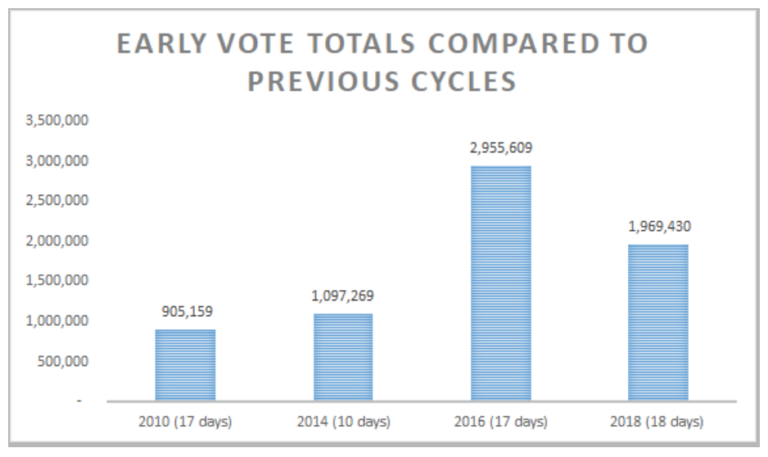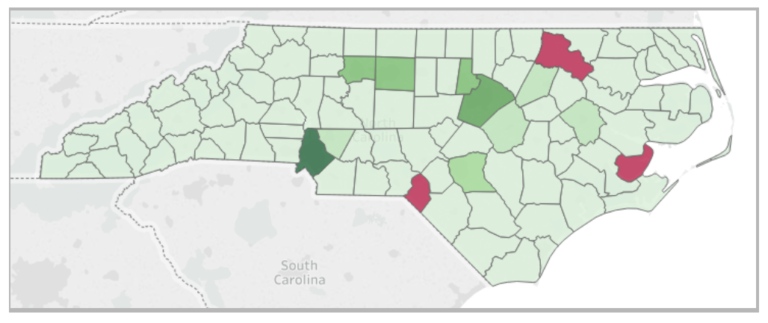According to data from the North Carolina State Board of Elections and Ethics Enforcement released on November 4th, over 2 million North Carolinians have already cast ballots— over 1,969,000 at Early Voting sites, and over 69,000 by mail.
[Click here to download a .pdf of this analysis.]
The 2,038,810 ballots represent 28.8% of North Carolina’s registered voters as of November 2nd; this “turnout rate” figure is the number of ballots cast divided by the number of registered voters. At this point in 2014, 17.4% of registered voters had cast ballots, and at this point in 2016, 45.0% had done so.
The last Saturday of Early Voting saw heavy traffic and reports of long lines at numerous polling places across the state —over 2 hours in some cases— reinforcing the need for additional resources on the busiest days of Early Voting, and the importance of the popular last Saturday of Early Voting.
This summer, the General Assembly passed legislation that led the majority of counties to reduce the number of Early Voting sites or reduce weekend hours, or both. That same legislation eliminated the last Saturday of Early Voting this year, but a subsequent bill restored it for 2018 only. As the law stands now, there will be no Early Voting on the final Saturday before Election Day in 2020 or any future election.
As stated in Democracy NC’s previous analyses of the 2018 Early Voting period, there is no perfect election to use for comparison. The chart below compares totals for this year’s Early Voting period (18 days), the entire 2014 Early Voting period (10 days), and the 2010 and 2016 elections (17 days). This year’s period began one day earlier than the 2014 and 2016 windows.
This year’s Early Vote totals represent a 79% increase from the 2014 Early Voting period and double the total from the 2010 Early voting period. Notably, both of those elections had high profile Senate races, which this year does not.


